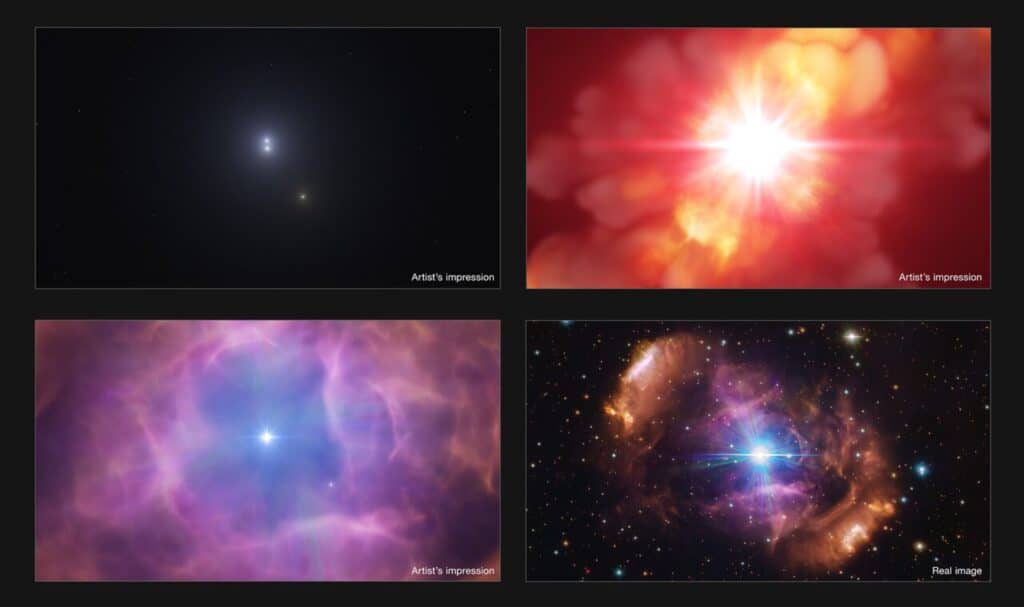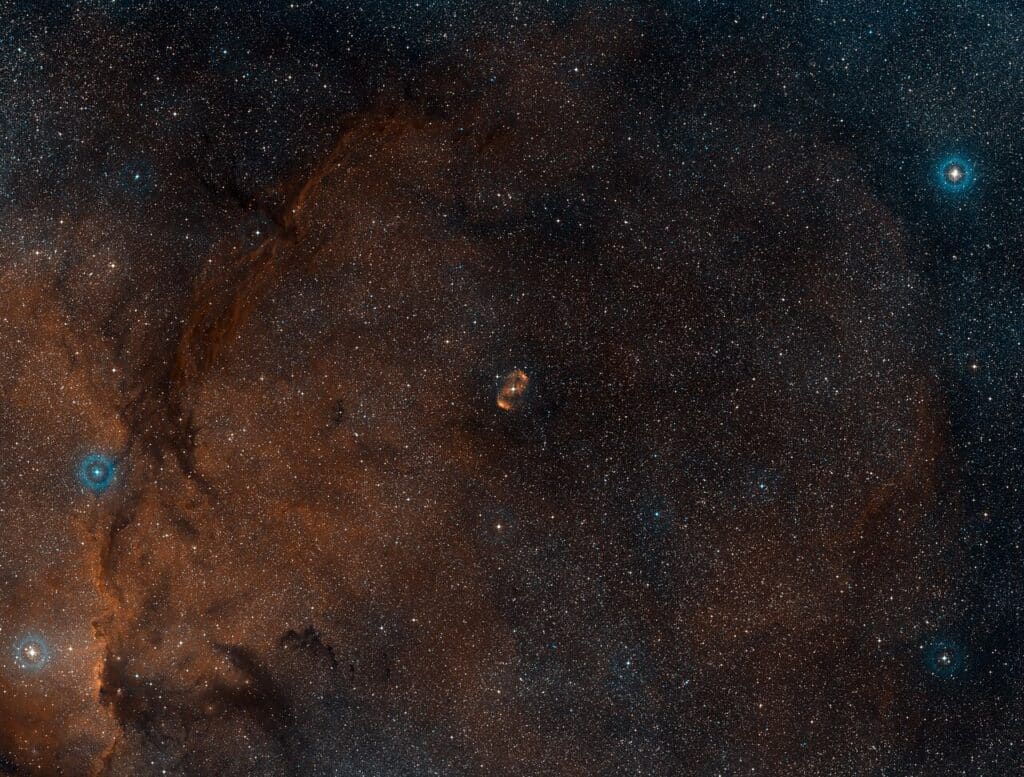Astronomers from the European Southern Observatory (ESO) recently stumbled upon an intriguing mystery that challenged their understanding of stellar evolution. Their captivating findings center around a pair of stars nestled within a stunning cloud of gas and dust.
The stellar duo, known as HD 148937, is located approximately 3,800 light-years away from Earth in the direction of the Norma constellation. Typically, star pairs are very similar, like celestial twins born from the same cosmic cradle. However, the stars in HD 148937 defied this norm, with one star appearing younger and possessing a magnetic field, while the other did not.
“When doing background reading, I was struck by how special this system seemed,” says lead study author Abigail Frost, an astronomer at ESO in Chile, in a media release. “A nebula surrounding two massive stars is a rarity, and it really made us feel like something cool had to have happened in this system. When looking at the data, the coolness only increased.”

The age discrepancy between the stars, with one appearing at least 1.5 million years younger than the other, was particularly puzzling. Stars that form together should be of similar age, so what could have caused this apparent rejuvenation?
Another piece of the cosmic puzzle was the nebula enveloping the stars, known as NGC 6164/6165. This celestial cloud, a mere 7,500 years old, is hundreds of times younger than both stars. Furthermore, the nebula exhibited unusually high levels of nitrogen, carbon, and oxygen — elements typically found deep within a star, not in the surrounding space.
To unravel this stellar mystery, astronomers combined nine years of data from the PIONIER and GRAVITY instruments on ESO’s Very Large Telescope Interferometer (VLTI) in Chile’s Atacama Desert, along with archival data from the FEROS instrument at ESO’s La Silla Observatory.
Their analysis led them to a startling conclusion: the system originally contained at least three stars, with two of them in close proximity while the third orbited at a greater distance. The two inner stars, unable to resist the pull of gravity, collided in a violent merger, creating a magnetic star and expelling material that formed the nebula we see today. The distant third star then settled into a new orbit with the newly merged, magnetic star, resulting in the binary system at the heart of the nebula.
This merger scenario not only explains the age discrepancy between the stars but also sheds light on the origin of the magnetic field in one of them. Magnetic fields are common in low-mass stars like our Sun but are not typically sustained in more massive stars. The discovery of HD 148937 provides the first direct evidence that massive stars can acquire magnetic fields through stellar mergers.
“The merger scenario was already in my head back in 2017 when I studied nebula observations obtained with the European Space Agency’s Herschel Space Telescope,” notes study co-author Laurent Mahy, a senior researcher at the Royal Observatory of Belgium. “Finding an age discrepancy between the stars suggests that this scenario is the most plausible one and it was only possible to show it with the new ESO data.”
The magnetic field in HD 148937 is a fleeting phenomenon, as magnetism in massive stars is not expected to last long compared to the star’s lifetime.

“Magnetism in massive stars isn’t expected to last very long compared to the lifetime of the star, so it seems we have observed this rare event very soon after it happened,” adds Frost.
As astronomers continue to probe the depths of the universe, ESO’s upcoming Extremely Large Telescope (ELT), currently under construction in the Chilean Atacama Desert, promises to shed even more light on the intricacies of stellar evolution and the secrets hidden within systems like HD 148937.
The tale of HD 148937 serves as a reminder that the cosmos is full of surprises, challenging our understanding of the universe and the stars that illuminate its vast expanse. As we gaze up at the night sky, we can’t help but wonder about the untold stories and mysteries waiting to be unraveled, one star at a time.












